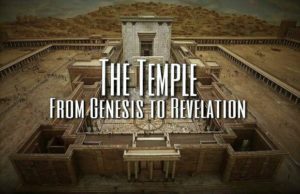Lesson 2 identified a very important theme that recurs throughout the Bible. While the Garden of Eden is a prevalent theme that helps develop the overarching biblical plot-line of redemption, this second theme receives even more attention from Genesis to Revelation. This week you will find that the exodus of Israel from Egypt is not a singular, isolated event in the Bible.
“Exodus” means “to depart from” by simple definition. The first 15 chapters of the book of Exodus records the events leading up to and directly following the great event from which the book got its title. One verse that sums up the tale very concisely is in Exodus 3:10,
“I will send you to Pharaoh that you may bring My people, the children of Israel, out of Egypt.”
While this historical event physically occurred in Exodus 14 when Israel crossed the Red Sea, officially putting Egypt, Pharaoh, and everything that was bondage behind them, this event meant something much greater than physical salvation from Pharaoh. You are about to see that the exodus was one of the most concrete events in the mind of the biblical Jew. This concrete impression helped the Jew put a face to the name, as it were. The face = departing from physical bondage and exile. The name = redemption from spiritual exile (sin).
Now that we have established some ground rules, let us begin the task of finding the exodus from Genesis to Revelation. The very first prophecy of redemption is found in Genesis 3:15 where God said the “Seed” of woman would crush the head of Satan. This is a white collar way of describing the fact that God would redeem (ransom) man from the bondage of sin’s consequences. In Genesis 3:23, Adam and Eve are sentenced to exile from the Garden of Eden. The consequences of their sin wrote sweat, pain, and turmoil (Gen. 3:16-19). These physical consequences helped remind Adam and Eve of the spiritual bondage that comes with sin, and the fact that they began to die physically helped them put a face to the name of spiritual death. Not coincidentally, Adam and Eve are in exile as early as Genesis 3:23, and that is exactly where the Seed is found in the last word of Genesis (Gen. 50:26). The Seed is found in Egypt. Egypt would soon become a name and place that would illicit every memory of exile, pain, bondage, and death. Just the thought of Egypt would make a Jew reach for his Xanax tablets. As if that were not enough, God helped Israel annually remember the exodus from Egypt in the Feast of Unleavened Bread (Exodus 13:8-10). And so it was that Egypt became the national symbol of spiritual death to any and everyone in Israel.
Now, suppose you are a Jewish prophet with some curly sideburns for a moment. If you wanted to preach a message to an audience of Jews, and the message was, “God will ransom you from your sins,” what symbol would best get the message across? You got it you genius you! That’s exactly what the prophet Zechariah does when preaching about the coming redemption to the Jews who had returned from Babylonian exile. In 520 B.C., Zechariah says, “I will redeem them.” He then illustrates the point like this…
“I will also bring them back from the land of Egypt, and gather them from Assyria. I will bring them into the land of Gilead and Lebanon, until no more room is found for them. He shall pass through the sea with affliction, and strike the waves of the sea: all the depths of the River shall dry up. Then the pride of Assyria shall be drown, and the scepter of Egypt shall depart.” (10:10-11)
This is perhaps the most explicit imagery of the exodus in prophecy used to describe redemption from sin. Nonetheless, the Bible abounds with such imagery, and you will need to watch for such symbolism to better understand your Bible. Here is a non-exhaustive list of prophetic imagery in the Old Testament, imagery depicting Israel’s impending or current judgment as similar to when they were in Egypt (Amos 2:10; 3:1; 5:16-20; 6:9-10; 7:1-3; 8:8-9; 9:5-7; Hosea 2:15; 7:16; 8:13; 9:3; 11:1-5; 12:9; 13:4; Joel 1:2-4) Here is prophetic imagery describing a future exodus from the bondage of sin (Isaiah 11:15-16; 52:11-12; Ezekiel 37:21-23; Hosea 1:10-11; 2:14-15; 11:1; Micah 2:12-13; 7:14-20; Zechariah 2:1-13). Again, this is far from an exhaustive list.
When will exodus from sin occur? This is the same question as, “When will the redeemer come?” Whenever the Seed of Genesis 3:15 comes, that is when God’s people will be led in exodus from sin. Each of the gospels present historical accounts of Jesus Christ’s life, proving that He was the embodiment of all Messianic promises. One of those Messianic promises was that He would be a prophet like Moses (Deuteronomy 18:15-19). Thus, if Jesus is going to fulfill all prophecy, He will have to behave like Moses, at least in part.
“Jesus not only saw himself as a Moses redux, but he also went out of his way to position himself accordingly. Some of this positioning was achieved through Jesus’ choice of words, some of it through his own engineering of circumstances, and some of it just simply through providential serendipity,” (Nicholas Perrin, p. 29).
When reading the gospels with a critical eye, you will notice the subtle ways that Jesus acts like Moses and even Israel, as He leads the people through a new exodus which consummates with His death on the cross of the Red Sea (pun intended).
This is part one in the study of Finding-The-Exodus-From-Genesis-To-Revelation. I hope you enjoyed this study as much as I have. Next week, log on and discover the evidence for a New Testament fulfillment of the exodus.
Helpful Resources– 1) Finding Jesus in the Exodus by Nicholas Perrin 2) Discovering Jesus by T. D. Alexander




Comments
Pingback: 2nd Exodus on PPH! – POWER OF PRETERISM